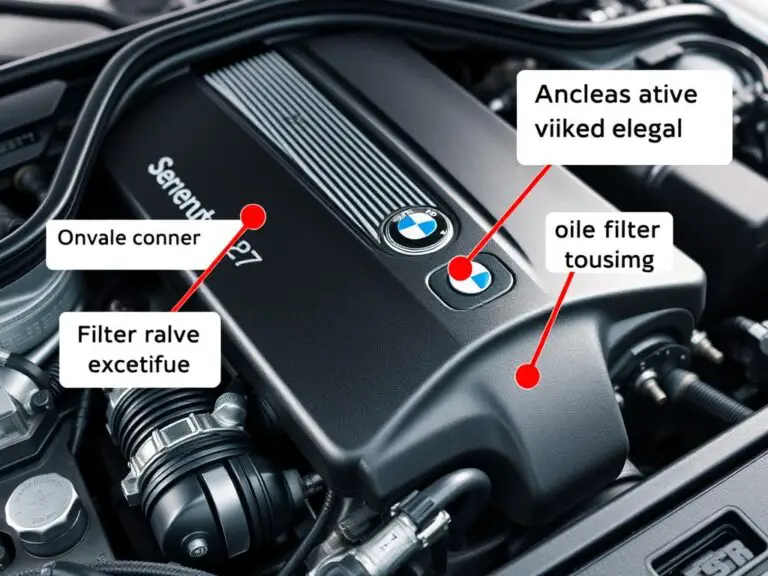Have you ever entered your BMW only to be greeted by a warning message saying “Increased battery discharge” or “Battery discharge, start engine”? This common issue affects many BMW owners and can be both confusing and concerning. The good news is that in most cases, it’s a problem you can diagnose and often fix yourself with the right information.
In this comprehensive guide, we’ll explain what causes BMW battery discharge issues, how to diagnose them, and provide practical solutions to get you back on the road. Whether you’re dealing with this problem right now or want to prevent it in the future, we’ve got you covered.
What Does “Increased Battery Discharge” Mean?
When your BMW displays the “Increased battery discharge” message, it’s alerting you that the battery’s charge level has fallen below optimal levels. This warning is part of BMW’s intelligent battery management system that monitors battery condition and alerts you before it becomes completely discharged.
The message typically appears when the battery voltage drops below a certain threshold, usually around 12.2 volts (a healthy BMW battery should maintain about 12.6 volts when the engine is off). This early warning system is designed to give you time to address the issue before you end up stranded with a car that won’t start.
Need to Check Your Battery’s Health?
A reliable battery tester can help you diagnose your BMW’s battery condition before problems escalate. Check your battery’s voltage, cold cranking amps, and overall health in minutes.

Common Causes of BMW Battery Discharge
Several factors can lead to increased battery discharge in your BMW. Understanding these causes is the first step toward solving the problem:
1. Short-Distance Driving Patterns
One of the most common causes of battery discharge is frequent short-distance driving. When you only drive short distances, the alternator doesn’t have enough time to fully recharge the battery after the energy-intensive starting process. As noted in BMW manuals, frequent short trips combined with long stationary periods can significantly affect battery health.

2. Parasitic Drain
Modern BMWs have numerous electronic systems that continue to draw small amounts of power even when the vehicle is turned off. While the car is designed to manage this, certain conditions can cause excessive drain:
- Aftermarket accessories improperly installed
- Electronic modules that fail to enter sleep mode
- Faulty components that continue to draw power
- Leaving devices plugged into power outlets

3. Battery Age and Condition
BMW batteries typically last 3-5 years, though this varies based on usage patterns and climate. As batteries age, their ability to hold a charge diminishes. If your battery is approaching the end of its service life, you may start seeing discharge warnings more frequently.
4. Extended Periods Without Use
Leaving your BMW parked for extended periods (more than a week) without driving can lead to battery discharge. Even in standby mode, the vehicle’s systems draw a small amount of power to maintain memory settings and security features.
5. Extreme Temperatures
Both very hot and very cold temperatures can affect battery performance. Cold weather particularly reduces a battery’s ability to deliver power, while extreme heat can accelerate internal damage and reduce overall lifespan.

How to Diagnose Battery Discharge Issues
Before attempting any fixes, it’s important to properly diagnose the issue. Here are some steps you can take:
Check Warning Messages
Pay attention to the exact message displayed. BMW vehicles may show different messages depending on the severity of the issue:
| Warning Message | Meaning | Severity |
| “Increased battery discharge” | Battery is discharging faster than normal | Moderate – Address soon |
| “Battery discharge, start engine” | Battery level is low and needs immediate charging | High – Address immediately |
| “Battery discharge while stopped” | Excessive power consumption while parked | Moderate – Investigate cause |
| “Electrical consumers switched off” | System has disabled non-essential functions to preserve power | High – Battery critically low |
Test Battery Voltage
Using a multimeter, you can check your battery’s voltage:
- With the engine off, a healthy battery should read between 12.4-12.7 volts
- With the engine running, voltage should be between 13.7-14.7 volts
- If readings are below these ranges, your battery may be failing or not charging properly

Check for Parasitic Drain
A parasitic drain test can help identify if something is drawing excessive power when the car is off:
- Disconnect the negative battery terminal
- Connect a multimeter set to measure amps between the negative terminal and the disconnected cable
- Wait 30-60 minutes for all modules to enter sleep mode
- Normal drain should be less than 50 milliamps (0.05 amps)
- Higher readings indicate a parasitic drain issue
Need Professional Diagnosis?
If you’re not comfortable performing electrical tests yourself, professional BMW technicians have specialized equipment to accurately diagnose battery and electrical system issues.
Immediate Solutions for BMW Battery Discharge
If you’re currently experiencing a battery discharge warning, here are some immediate steps you can take:
1. Take a Long Drive
One of the simplest solutions is to take your BMW for an extended drive of at least 30-60 minutes, preferably on highways where the engine can maintain higher RPMs. This allows the alternator sufficient time to recharge the battery. For optimal charging, minimize the use of power-hungry features like the air conditioning, heated seats, and high-volume audio during this charging drive.

2. Jump-Start Your BMW
If your battery is too depleted to start the car, you’ll need to jump-start it. BMW vehicles have specific jump-starting procedures:
- Locate the jump-start terminals (some BMWs have a special terminal under the hood)
- Connect the positive cable to your BMW’s positive terminal or jump point
- Connect the other end of the positive cable to the donor car’s positive terminal
- Connect the negative cable to the donor car’s negative terminal
- Connect the other end of the negative cable to a ground point on your BMW (not the negative battery terminal)
- Start the donor vehicle and let it run for a few minutes
- Attempt to start your BMW
- Once started, let both vehicles run for at least 10 minutes
- Disconnect cables in reverse order

3. Use BMW’s Deep Sleep Mode
Newer BMW models have a “Deep Sleep Mode” that minimizes battery drain when the vehicle will be parked for extended periods. To activate it:
- Access the infotainment system
- Navigate to Apps menu > Vehicle apps > System settings
- Select “Deep sleep mode”
When you need to use the vehicle again, press the trunk button to wake it from deep sleep mode.
Keep Your BMW Battery Charged
A quality BMW-compatible battery charger can maintain your battery’s charge during periods of inactivity and extend its overall lifespan.
Long-Term Solutions to Prevent Battery Discharge
To prevent future battery discharge issues, consider these long-term solutions:
1. Install a Battery Tender/Maintainer
A battery tender (also called a trickle charger or maintainer) keeps your battery at optimal charge when the vehicle isn’t being used regularly. These devices are especially useful for vehicles that sit for extended periods or are only used for short trips.
Benefits of Battery Maintainers
- Extends battery life by preventing deep discharge
- Maintains optimal charge without overcharging
- Prevents sulfation (a leading cause of battery failure)
- Most modern units are fully automatic and safe for long-term use
- More cost-effective than replacing batteries frequently
Limitations
- Requires access to an electrical outlet
- May need professional installation for hardwired options
- Won’t fix underlying electrical issues causing drain
- Additional cost beyond regular maintenance
- Not practical for daily-use vehicles without a dedicated parking spot

2. Upgrade to an AGM Battery
If your BMW didn’t come with an Absorbent Glass Mat (AGM) battery, upgrading to one can provide better performance and longevity, especially for vehicles with high electrical demands. AGM batteries offer several advantages over traditional lead-acid batteries:
- Better charge acceptance and faster recharging
- Higher resistance to deep discharge damage
- Longer service life (typically 5-7 years vs. 3-5 for standard batteries)
- Improved cold-weather performance
- Better support for vehicles with start-stop technology
Upgrade Your BMW Battery
An AGM battery can provide better performance and longer life for your BMW, especially if you frequently make short trips or use power-hungry features.
3. Address Parasitic Drain Issues
If you’ve identified a parasitic drain, it’s important to address the root cause. Common culprits include:
- Faulty comfort access systems
- Malfunctioning control modules that don’t enter sleep mode
- Aftermarket accessories with improper wiring
- Trunk or interior lights that don’t turn off properly
- Damaged wiring causing short circuits
Diagnosing specific parasitic drain issues often requires specialized equipment and expertise. A BMW specialist can perform a comprehensive electrical system diagnosis to identify and fix the exact cause.

Battery Maintenance Tips for BMW Owners
Regular maintenance can help prevent battery issues before they start:
1. Regular Driving Habits
If possible, take your BMW for a drive of at least 30 minutes once a week, especially if you normally only make short trips. Highway driving is ideal as it allows the engine to run at higher RPMs, which generates more charging power through the alternator.
2. Keep Battery Connections Clean
Corrosion on battery terminals can prevent proper charging. Periodically check your battery connections and clean them if necessary:
- Disconnect the battery (negative terminal first)
- Mix a solution of baking soda and water
- Use a wire brush to clean the terminals
- Rinse with clean water and dry thoroughly
- Apply a thin layer of petroleum jelly or terminal protector
- Reconnect the battery (positive terminal first)

3. Minimize Power Usage When Parked
When parking your BMW, especially for extended periods:
- Ensure all lights are off (including interior and trunk lights)
- Unplug any devices from power outlets and USB ports
- Close all doors completely to deactivate interior lighting
- Consider disconnecting the battery for very long storage periods (over a month)
4. Use BMW’s Transport Mode for Long-Term Storage
For extended storage periods, some BMW models offer a “Transport Mode” that minimizes power consumption beyond even the standard sleep mode. This typically requires activation by a BMW technician using specialized diagnostic equipment.
When to Seek Professional Help
While many battery issues can be addressed by owners, some situations warrant professional attention:
Signs You Need Professional Diagnosis
- Battery discharge warnings persist after charging or battery replacement
- Multiple electrical systems showing unusual behavior
- Battery drains completely overnight or within a few days
- Jump-starting only provides temporary relief
- Dashboard shows multiple electrical system warnings
BMW vehicles have complex electrical systems with numerous interconnected components. Professional technicians have access to specialized diagnostic equipment that can pinpoint issues that might not be apparent through basic testing.
What BMW Service Can Provide
- Comprehensive electrical system diagnostics
- Software updates that may resolve system issues
- Testing of the charging system components
- Identification of faulty control modules
- Access to technical service bulletins specific to your model
Common Professional Repairs
- Replacement of the Intelligent Battery Sensor (IBS)
- Alternator testing and replacement
- Control module reset or replacement
- Wiring harness repairs
- Software updates to the Battery Management System

Get Expert BMW Service
For persistent electrical issues, professional diagnosis can save time and prevent further damage to your vehicle’s systems.
Conclusion: Keeping Your BMW Battery Healthy
Battery discharge issues are common in BMW vehicles due to their sophisticated electrical systems and high power demands. Understanding the causes and implementing both immediate and long-term solutions can help you avoid the frustration of a vehicle that won’t start.
Remember that prevention is always better than cure. Regular maintenance, appropriate driving habits, and using tools like battery maintainers can significantly extend your battery’s life and prevent discharge warnings from appearing in the first place.
If you continue to experience battery discharge issues despite taking preventive measures, don’t hesitate to seek professional help. The investment in proper diagnosis and repair will ultimately save you time, money, and frustration in the long run.
Complete BMW Battery Care Kit
Get everything you need to maintain your BMW’s battery health in one package: battery tester, maintainer, terminal cleaner, and step-by-step guide.



